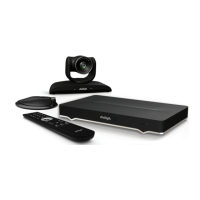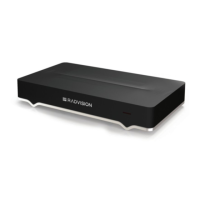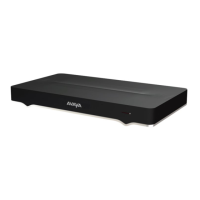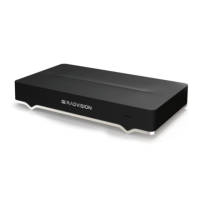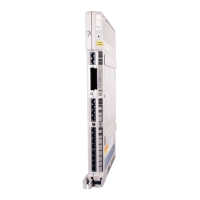You can set a time limit for:
• Point-to-point calls
• Hosted calls (embedded MCU)
Once you set a time limit, an alert appears during the meeting when the time limit is reached. The
user can then decide to disconnect from the videoconference, postpone the reminder and extend
the meeting for another hour, or remove the time limit from this meeting. The meeting
automatically closes if there is no response to the alert after 30 seconds.
Before you begin
If configuring from the endpoint, you must first enable advanced configuration, as described in
Enabling Advanced Maintenance on the XT Series on page 151.
Procedure
1. Set the time limit for embedded MCU calls.
a. Access call settings. From the XT Series web interface, select Administrator
Settings > Calls > Preferences > MCU. From the endpoint's main menu, select
Configure > Advanced > Calls > Preferences > MCU.
b. the time limit for meetings with multiple participants in the Meeting Time Limit field.
By default, the time limit is Unlimited. The maximum limit you can set is 24 hours.
2. Set the time limit for point-to-point calls.
a. Access call settings. From the XT Series web interface, select, select Administrator
Settings > Calls > Preferences > General. From the endpoint's main menu,
selectConfigure > Advanced > Calls > General.
b. Define the time limit for point-to-point calls in the Call Time Limit field. By default, the
time limit is Unlimited. The maximum limit you can set is 24 hours.
Configuring Advanced Sound (Audio Output) Settings
About this task
In most cases, the Avaya Room System XT Series sound output is transparent and works with the
default settings. However, for complex room setups, the XT Series allows you to carefully merge
different audio signals into audio tracks, and then route each track to any audio output, like a
monitor's speakers. Merging all inputs and outputs into one sound stream, or track, creates echos
and audio feedback loops.
Therefore the XT Series handles audio in two separate tracks. Each track can combine multiple
inputs into one sound stream, and route it to one of the audio outputs available (
Figure 76:
Example of merging audio into two tracks on page 168). A room's microphones are not routed to
the monitor's speakers, to avoid echo. Instead, the sound of other participants and the computer
audio is routed to the monitor's speakers, while a video recorder would normally need to record
both sides of the conversation, both room microphones and the sound of other participants. You
may also want to record computer audio shared in the meeting.
Configuring Advanced Sound (Audio Output) Settings
August 2020 Deployment Guide for Avaya XT Series 167
Comments on this document? infodev@avaya.com

